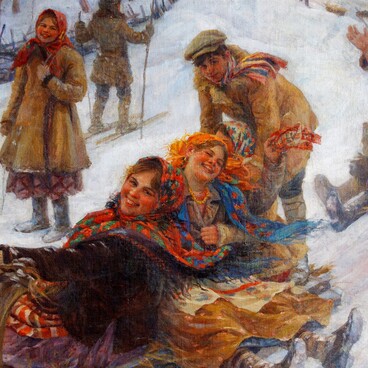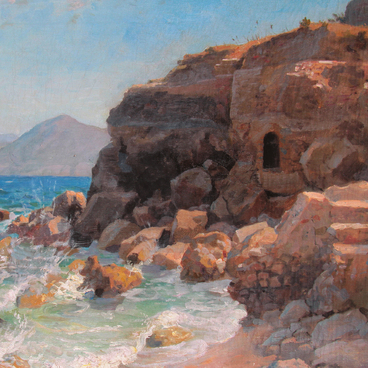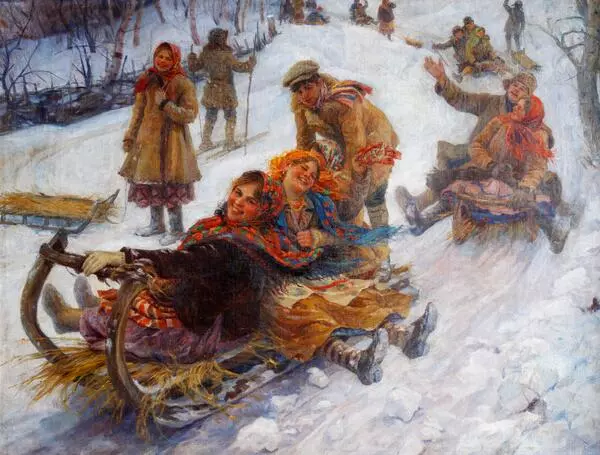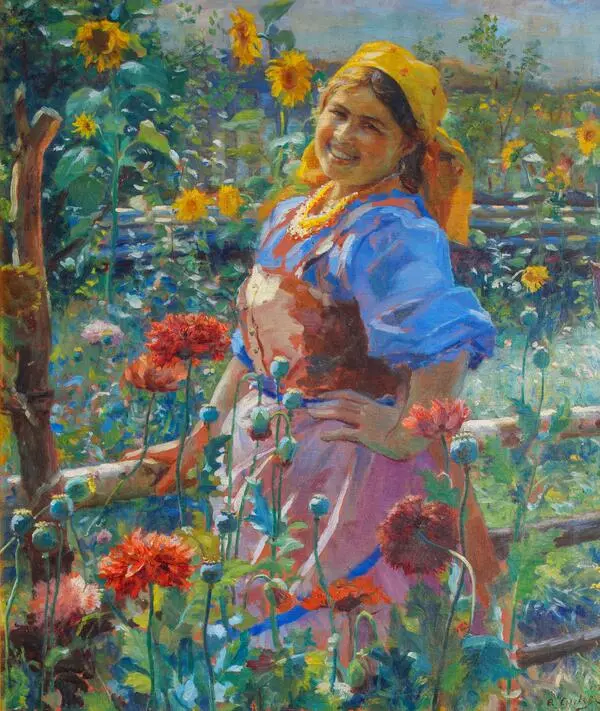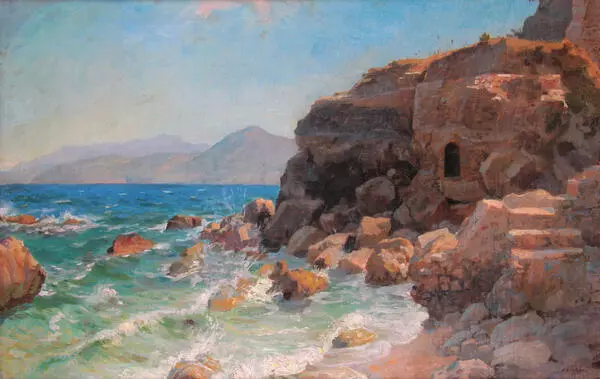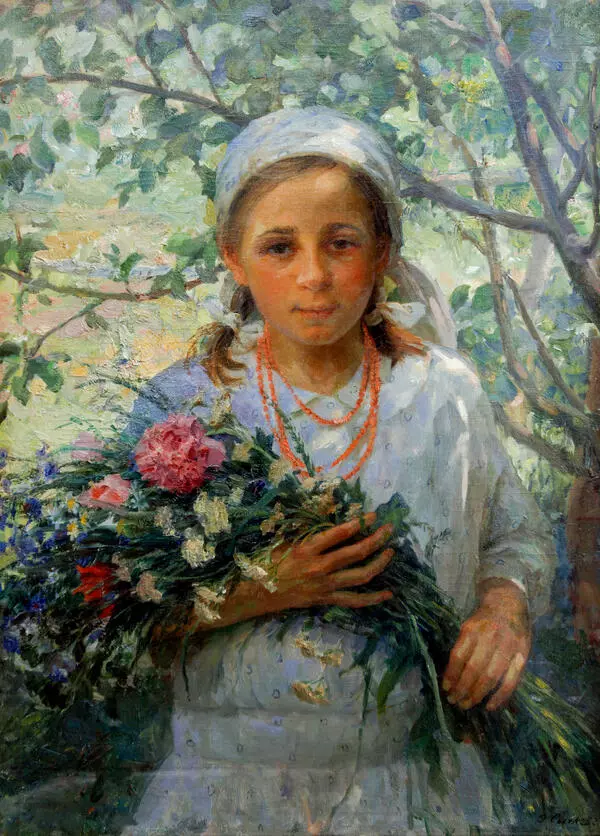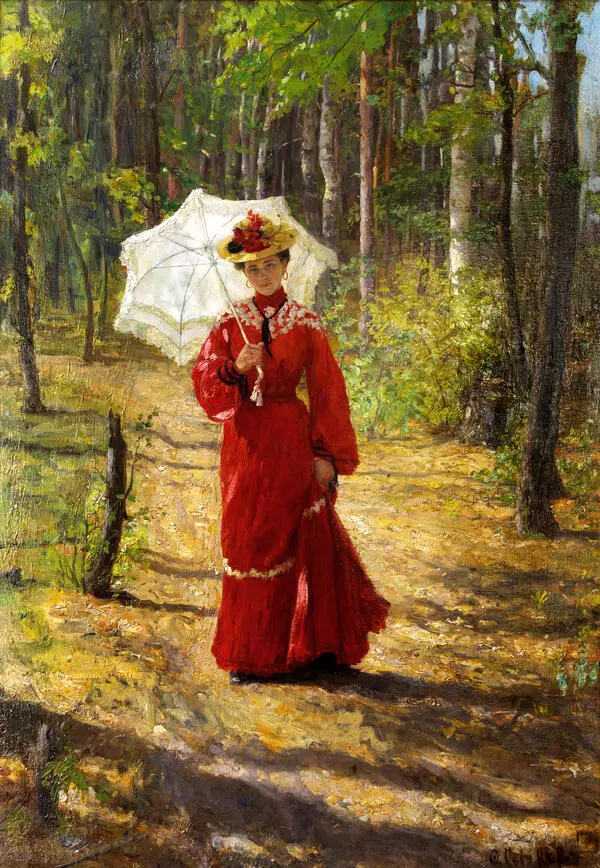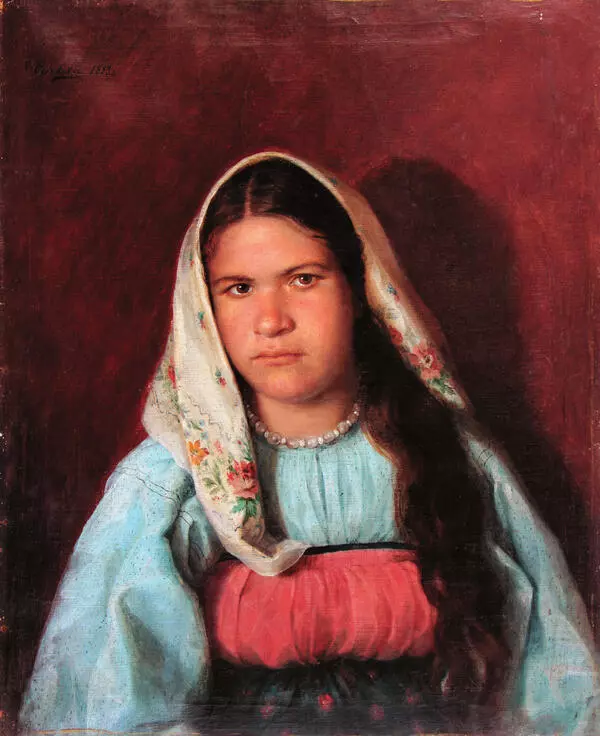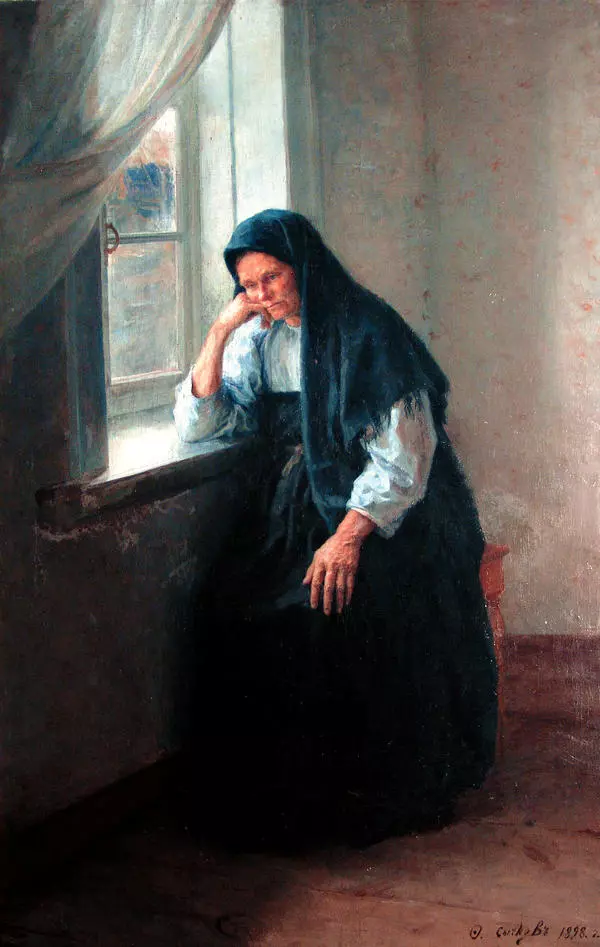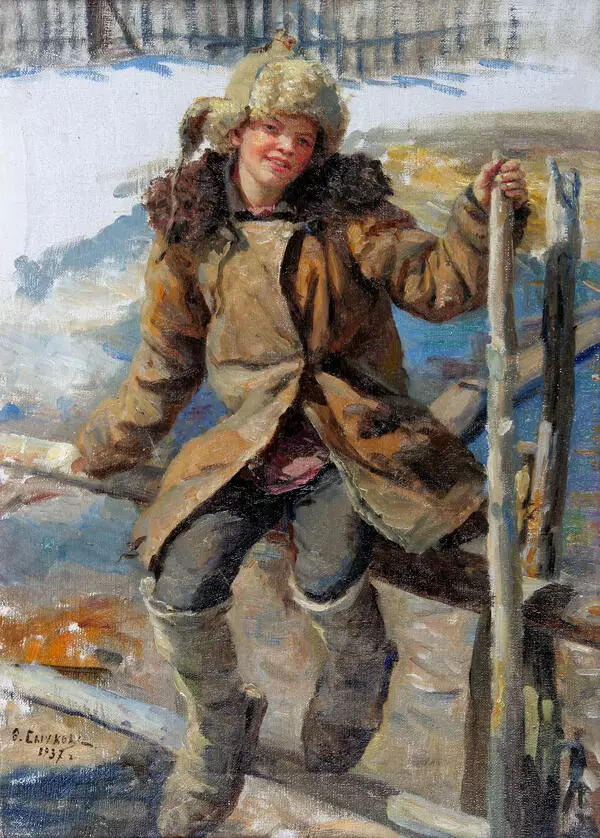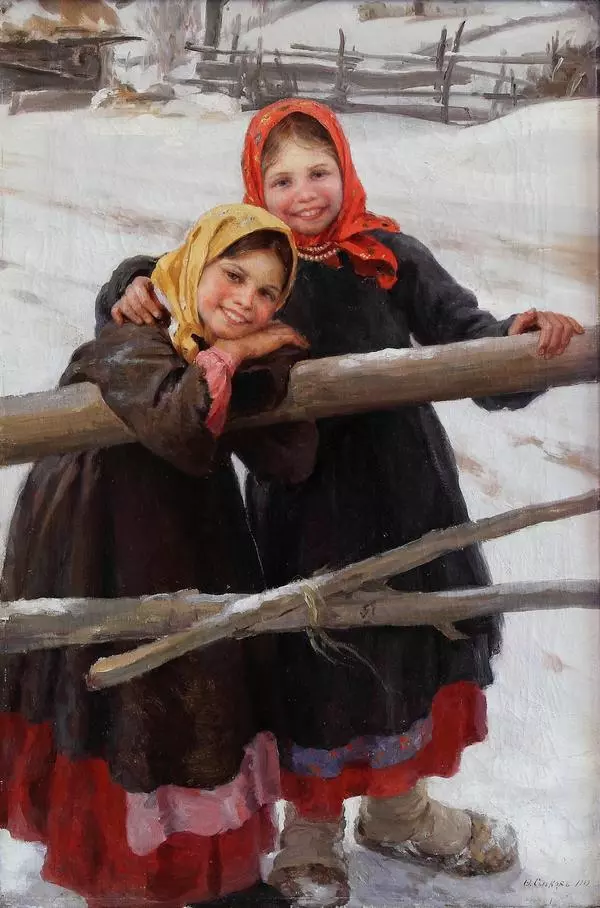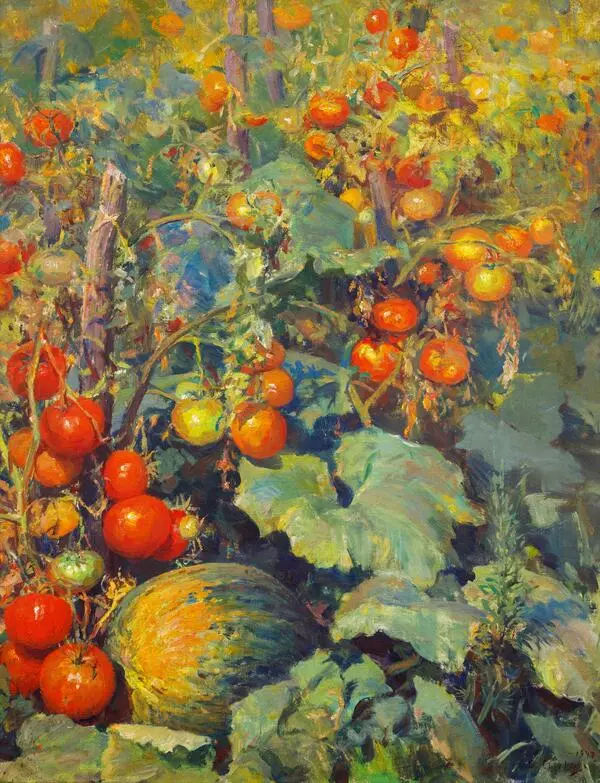Fedot Sychkov painted the picture ‘Capri. Faraglioni Arch’ in 1908. He depicted a real view of the Italian island of Capri, which he saw while traveling in Italy. Foraglioni (or Faraglioni) from Italian ‘faraglioni’ means ‘sea cliffs’. This is one of the most popular places on the island. On the southern coast, three light ocher limestone reefs protrude from the depths of the sea. These rocks have become a favorite symbol for Italians: they poetically compare them with Gothic cathedrals, and sometimes call ‘Three Sons of Capri’.
The painter depicted a bizarre rocky arch that rises against the background of the blue sky and the bright blue sea. To the left is a staircase leading upward. On one of the steps, the author painted a woman in a long black skirt, a white blouse, and a wide brimmed hat. To enliven the composition, he added three more staffage silhouettes above. ‘Staffage’ refers to small figures of people, who do not play a key role in the scene and are needed exclusively to make the landscape look more interesting.
Sychkov worked especially thoroughly on the relation of light and shadow. To show the brightly illuminated surface of the arch and the shaded side of the rock, he used all the possibilities of tonal painting. He made the same colors lighter or darker, trying to convey subtle shades of illumination in the canvas. Thus, he managed to show a very realistic landscape, full of light and air.
The master reliably depicted the traces of erosion on the stone. They help to understand the processes of the formation of a natural arch: in ancient times, this must have been a huge cave, originally located underground. Most likely, it came to the surface because of a series of landslides and, under the further influence of water and wind, turned into a unique natural monument — a trussed arch.
During a trip to Italy, Fedot Sychkov discovered new genres. He observed the monuments of the ancient world and painted architectural landscapes. He also admired the Tyrrhenian and Adriatic seas, creating seascapes in the open air, including ‘Capri. Foraglioni Arch’.
The painter depicted a bizarre rocky arch that rises against the background of the blue sky and the bright blue sea. To the left is a staircase leading upward. On one of the steps, the author painted a woman in a long black skirt, a white blouse, and a wide brimmed hat. To enliven the composition, he added three more staffage silhouettes above. ‘Staffage’ refers to small figures of people, who do not play a key role in the scene and are needed exclusively to make the landscape look more interesting.
Sychkov worked especially thoroughly on the relation of light and shadow. To show the brightly illuminated surface of the arch and the shaded side of the rock, he used all the possibilities of tonal painting. He made the same colors lighter or darker, trying to convey subtle shades of illumination in the canvas. Thus, he managed to show a very realistic landscape, full of light and air.
The master reliably depicted the traces of erosion on the stone. They help to understand the processes of the formation of a natural arch: in ancient times, this must have been a huge cave, originally located underground. Most likely, it came to the surface because of a series of landslides and, under the further influence of water and wind, turned into a unique natural monument — a trussed arch.
During a trip to Italy, Fedot Sychkov discovered new genres. He observed the monuments of the ancient world and painted architectural landscapes. He also admired the Tyrrhenian and Adriatic seas, creating seascapes in the open air, including ‘Capri. Foraglioni Arch’.


